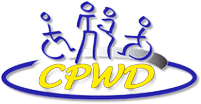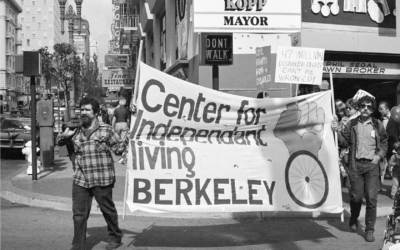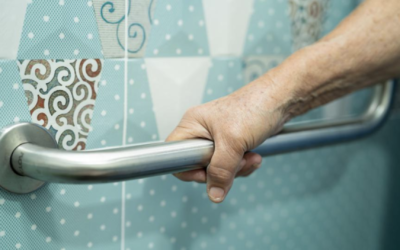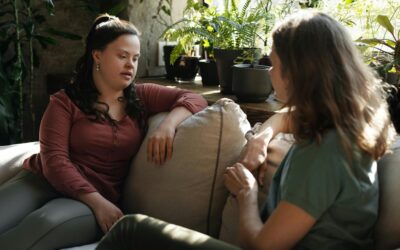(Image: Someone is pictured holding a prosthetic arm.)
For Limb Loss and Limb Difference Awareness month, we want to highlight prosthetics and the experiences of individuals who use them. Prosthetic technology has evolved significantly over the last few decades, offering individuals with limb loss increased mobility and quality of life. Over the years, advancements in technology, materials, and design have significantly enhanced their effectiveness, allowing users to achieve remarkable achievements both in everyday and recreational activities.
A Quick History
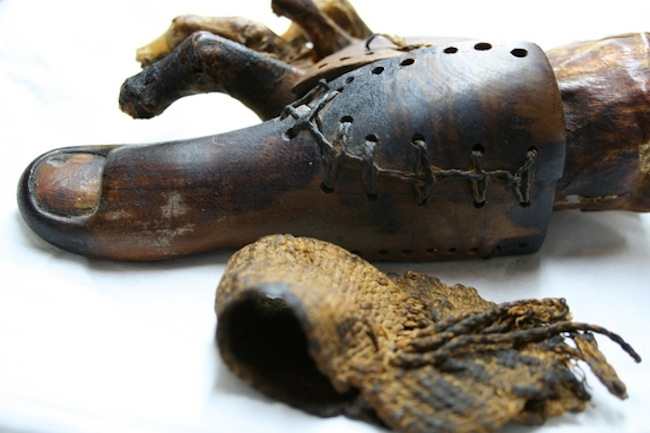
(Image: Egyptian mummy prosthetic toe. Source: The Lancet)
Prosthetics are not new to human use. Archeologists found a wooden, prosthetic toe in the tomb of and Egyptian mummy; and at other sites wood or bronze feet or legs.
Over the centuries, prosthetics and other adaptive devices were used, invented and self-crafted to assist with mobility and increase life functionality. During the Civil War in the U.S., within a day of enlisting, a young James Hanger survived a cannonball tearing through his leg at the Battle of Philippi. He went on to become and early developer of leg prosthetics, introducing the Hangar Limb, the first prosthetic device that included hinges around the knee and ankle, enabling a more balanced and natural walking gait.
Over the centuries since, prosthesis has continued to evolve, now including muscle- and nerve-sensing technology, unique engineering designs that more closely replicate natural balance, movement and rebound, among other functional improvements.
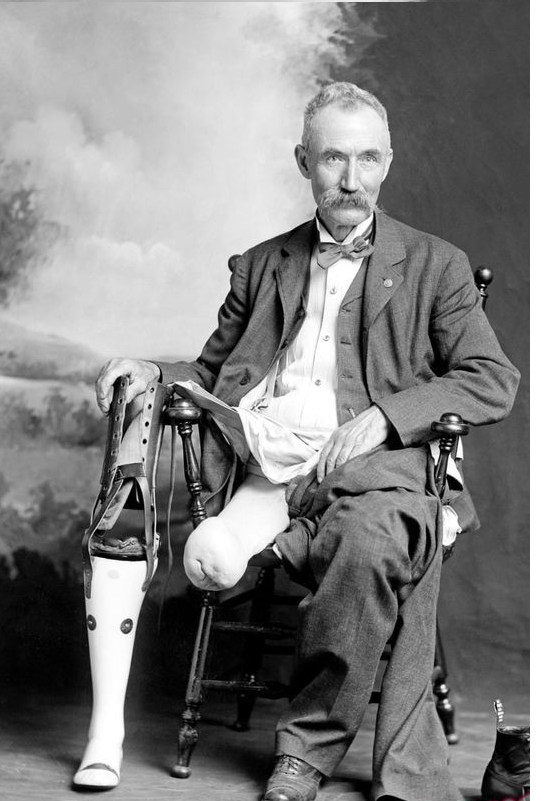
(Image: James Hangar and the Hanger Limb. Source: Amplitude Magazine)
Types of Prosthetics and Their Functions
Prosthetics essentially fall into one of two categories: functional and recreational. As implied by the terms, the former is for basic movement and not intended to be used for increased activity, while the latter can be a variety of specialized equipment specifically designed for recreational applications, such as running, swimming, skiing and so forth.
Functional Prosthetics

The LUKE Arm Prosthetic. Photo from Mobius Bionics
Functional prosthetics are engineered to mimic the natural movement of limbs. A basic functional prosthetic could be as simple as an appendage socket with a solid extension, such as a knee cup with a wooden, metal or composite leg, that allows for balance and some mobility. Today, some functional prosthetics may also include advanced technologies such as myoelectric sensors that respond to muscle movements in the residual limb. For example, sophisticated myoelectric arms can provide individuals the ability to perform complex tasks that require fine motor skills, such as typing or playing a musical instrument.
One example of recent development in prosthetic technology is the creation of the LUKE arm, a highly advanced robotic arm that allows for precise control over multiple joints simultaneously. Two Veterans were the first to receive the LUKE arm in 2017. This arm uses a combination of sensors and motors to mimic the natural movement of a human arm, significantly enhancing the user’s ability to perform everyday tasks.
However, most functional prosthetics are essentially extensions of limbs to allow for increased mobility and body functionality. This is in part due to a cost barrier, as even mid-range more advanced prosthetics can cost more than $100,000 for one unit.
Recreational Prosthetics
Recreational prosthetics are specifically designed to aid in sports and other physical activities. These devices are tailored to the demands of specific sports, providing both the necessary support and the ability to perform at competitive levels. For example, running blades, made from carbon fiber, offer amputees the elasticity and energy return needed for sprinting and long-distance running.
Amy Purdy is a renowned Paralympic snowboarder from the United States, and an incredible example of how prosthetics support individuals to live their best lives. She lost both of her legs below the knee due to meningitis at the age of 19. She was determined to build her life back and do the things she loved. As an avid snowboarder, she vowed to get back on the slopes. Using duct tape and plenty of bolts, she built her first pair of adaptive snowboarding feet that took her out on the slopes only four months after losing her legs. Thankfully, once she reached the Olympics, technology had developed further and she used metal foot prosthetics during the 2014 Sochi Paralympic Games. They were oval shaped metal supports mounted on a spring base with a square joint at the top for attaching to a leg prosthetic. They were specialized to mimic the precise ankle and leg movements required for intense snowboarding.
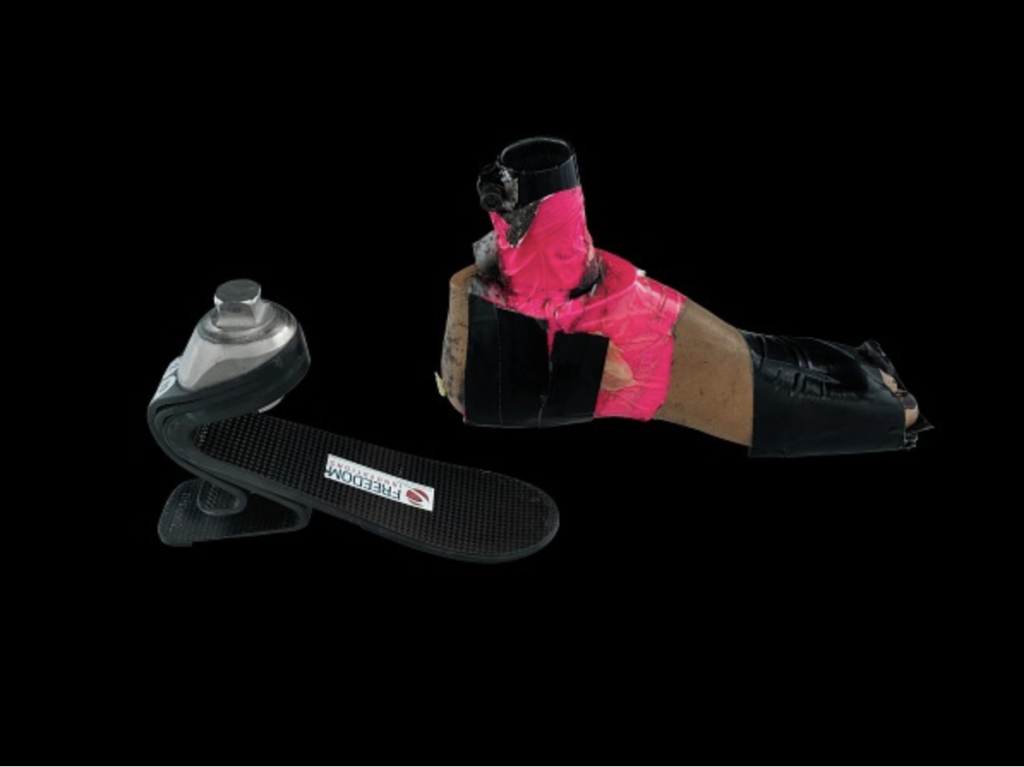
Amy Purdy’f first homemade prosthetic for snowboarding next to the prosthetic she used in the Olympics.
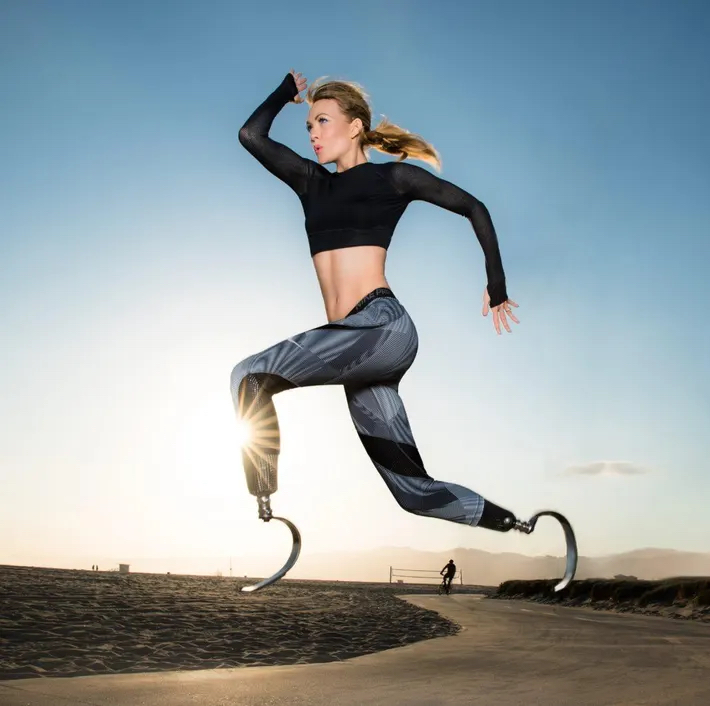
(Image: Amy Purdy with prosthetic Running Blades. Source: Forbes)
Recently, we interviewed Dale Gaar, a member of the board of directors for CPWD. He is also an amputee, and lost one of his legs in a car accident over 40 years ago. Dale discovered adaptive skiing soon after losing his leg. He was able to ski on one leg using outriggers, which are forearm crutches with ski tips on the end. Dale went on to teach adaptive skiing for several decades, and credits skiing for giving him the strength and courage to learn to live with limb loss.
In addition to functional and recreational, prosthetics are also defined by the area of the body the assist, and their intended use. Following is a broad overview of these subcategories:
Upper Limb Prosthetics
- Cosmetic Prosthetics: These are designed primarily for aesthetic purposes, mimicking the appearance of a real limb but with limited functionality.
- Body-Powered Prosthetics: Operated using cables and harnesses, these prosthetics allow users to control the device through body movements.
- Myoelectric Prosthetics: These use electrical signals from the user’s muscles to control the movements of the prosthetic, offering more precise control and natural movement.
Lower Limb Prosthetics
- Transtibial Prosthetics: Used below the knee, these devices include a socket, pylon, and foot, which help in basic movement and support.
- Transfemoral Prosthetics: Above the knee, these prosthetics require sophisticated knee joints in addition to the basic components, facilitating more complex movements.
The experience of using prosthetics varies significantly among individuals. Advanced prosthetics like myoelectric arms provide users with a range of motion and capabilities that were unimaginable a few decades ago. However, the adjustment process can be challenging, often requiring extensive physical therapy and adjustment to the device. Users frequently report a period of emotional adjustment as they adapt to the new normal of using a prosthetic limb.
The impact of these devices extends beyond mere physical assistance; they play a crucial role in the psychological and emotional well-being of users. Prosthetics help restore a sense of normalcy and independence, significantly improving life satisfaction. They also encourage participation in community and social activities, which is vital for mental health.
Current Issues with Insurance and Accessibility Policies
The cost of prosthetics can range widely depending on the type and level of technology involved. Basic cosmetic prosthetics might cost as little as $5,000, while advanced myoelectric limbs can reach up to $100,000. These prices can be prohibitive for many, making insurance coverage crucial. Dale Garr shared with us that his prosthetic, which includes a microprocessor controlled knee, costs about $80,000 out of pocket.
Despite the advancements in technology, accessing prosthetic care remains a significant challenge for many due to these high costs and limited insurance coverage. Many insurance plans do not fully cover the more sophisticated prosthetics used for recreational and sports activities, citing them as “luxury” items rather than necessities. Typically, one would only get coverage for a functional prosthetic. This significantly limits people with limb loss from being able to exercise, explore, and engage in the world at an active level; activities that are important for physical and mental health, and more so, a basic human freedom. Many people who need these life-changing devices face huge financial barriers. CPWD, in collaboration with Rep. David Ortiz, has been championing change at the lawmaker level that would increase accessibility to not only necessary functional prosthetic devices, but also increase access and affordability for recreational and other prosthetic devices that could increase independence and quality of life.
As outlined in this previous article, led by Rep. Ortiz HB23-1136 Prosthetic Devices For Recreational Activity was passed in Colorado and four other states in 2023. This was a huge victory and needed change for people living with limb loss and limb difference. The new law now requires insurance companies to cover the cost of prosthetics for recreational activities. In addition, this year, eleven other states introduced legislation that would create policies for insurance companies to cover these necessary devices.
A grassroots movement “So Everybody Can Move,” is building cause and targeting legislative change by organizing and creating partnerships with nonprofit organizations, such as CPWD. There are easy ways to get involved and support the cause on their website. You can also reach out to our Community Organizer, Craig Towler at [email protected], to find out more.
The Future of Prosthetics
The field of prosthetics is advancing at an exciting pace, with several groundbreaking technologies on the horizon that promise to improve the way prosthetic devices function. Bionic prosthetics, which blend advanced sensors and artificial intelligence, are changing the way users can control their limbs in a more natural and intuitive way. This is made possible by translating neural signals from the user’s remaining limb. At the same time, 3D printing is advancing change by allowing for the fast and cost-effective creation of customized, lightweight prosthetics.
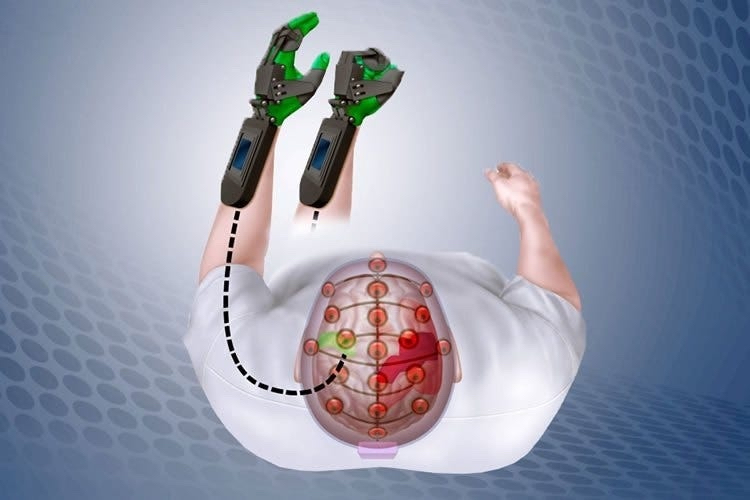
(Image: Neuroprosthetic design connecting brain waves to artificial limb movement)
We also see developments like neuroprosthetics, which connect directly with the nervous system to bring back functions such as sensory feedback, giving users the ability to feel through their prosthetic limbs. Researchers are also developing prosthetic skin that can sense pressure, temperature, and texture, vastly improving the user experience. Other new devices that harvest energy from the body’s own movements or heat that are being developed to power prosthetics more efficiently.
The integration of AI and machine learning is fine-tuning how prosthetics might adapt to user movements, making them more personalized and effective. For example, AI algorithms can interpret nerve signals to the brain, translating them into movements, which allows for smoother and more precise movements. AI-enabled prosthetics also bring adaptive learning to the device, meaning the prosthetic can learn and adapt to the individual user’s needs, creating optimized functionality. Virtual and augmented reality technologies are also now being used in training and rehabilitation, helping users adjust to their new limbs in safe, controlled virtual environments.
We look forward to seeing how these technological advances make independent living easier and more accessible for people with limb loss and limb difference. Whether helping a person walk, run, swim, or engage in other physical activities, prosthetics have proven to be invaluable in both functional and recreational realms. As technology continues to evolve, the future holds even greater promises for individuals needing prosthetic assistance.
If you have any questions about limb loss or need help finding resources and information, please reach out to CPWD at [email protected]. Our team includes individuals with limb loss who are ready to support you in meeting your independent living needs.
Please watch this video of our Board Member, Dale Gaar, and Staff Member, Alexia Diaz, who live with limb loss, describe some of their experiences.
